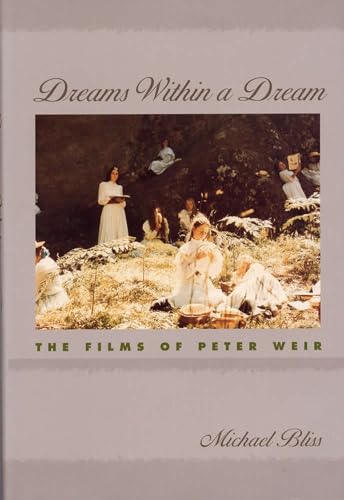Verwandte Artikel zu Dreams within a Dream: The Films of Peter Weir

Zu dieser ISBN ist aktuell kein Angebot verfügbar.
Alle Exemplare der Ausgabe mit dieser ISBN anzeigen:Bliss considers Weir's heritage, Australian cinema, which gave the director some of his most basic themes: the conflict between reason and mystery; the confrontation with an alien and often threatening landscape; the hero's journey into a region in which good and evil are in cosmic opposition.
Bliss also discusses Weir's appropriation and adaptation of another quality endemic to Australian cinema: "mateship", the celebration of the bond between male companions. By making self-knowledge dependent on action involving one's friends, Weir gives mateship a new meaning, as he demonstrates in his celebrated war film Gallipoli.
To help explain Weir's films, Bliss looks to Freud and Jung, whom Weir has studied, as well as to two other prominent purveyors of myth and archetype: Northrop Frye and Joseph Campbell. Virtually all of Weir's characters struggle toward a new mode of awareness, one that is based on elemental truths and spiritual unity.
Weir's films evidence a striking unity of attitude. From his first widely distributed film, The Cars That Ate Paris, to 1998's The Truman Show,Weir's masterful technique and consistently challenging films mark him as one of our most important contemporary filmmakers. Dreams Within a Dream makes Weir come alive in the emotional and intellectual ways that his films do.
„Über diesen Titel“ kann sich auf eine andere Ausgabe dieses Titels beziehen.
- VerlagSouthern Illinois University Press
- Erscheinungsdatum2000
- ISBN 10 0809322846
- ISBN 13 9780809322848
- EinbandTapa dura
- Anzahl der Seiten240
- Bewertung
Gebraucht kaufen
Zustand: BefriedigendFormer library book; may include... Mehr zu diesem Angebot erfahren
Versand:
Gratis
Innerhalb der USA
Beste Suchergebnisse beim ZVAB
Dreams Within a Dream : The Films of Peter Weir
Buchbeschreibung Zustand: Good. Former library book; may include library markings. Used book that is in clean, average condition without any missing pages. Artikel-Nr. GRP77071396
Weitere Informationen zu diesem Verkäufer | Verkäufer kontaktieren
Dreams Within a Dream: The Films of Peter Weir
Buchbeschreibung Zustand: Sehr gut. Illustrated. 242 S. Gepflegter, sauberer Zustand. 1181546/2 Gebundene Ausgabe, Maße: 15.24 cm x 2.54 cm x 22.86 cm. Artikel-Nr. 11815462
Weitere Informationen zu diesem Verkäufer | Verkäufer kontaktieren

